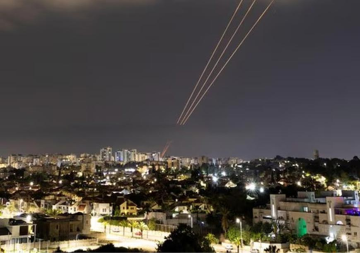It is widely thought that non-tariff barriers to trade (NTBs) are the main obstacles to intra-regional trade in South Asia. Intra-regional trade in South Asia is merely 5 per cent as compared to 58 per cent in the EU, 52 per cent in the NAFTA region, and 26 per cent in the ASEAN zone.
A study conducted by the Consumer Unity and Trust Society International suggests that complete elimination of tariffs under the South Asian Free Trade Agreement (SAFTA) may increase intra-regional trade by 1.6 times. Hence, it is imperative that intra-regional trade in the region is enhanced through bilateral and regional initiatives.
All measures, other than tariffs, which protect domestic industries or affect the free flow of trade, come under the NTB umbrella. When such non-tariff measures cannot be justified under given bilateral, regional and multilateral agreements they need to be dealt with. While protection is to an extent appropriate given domestic economic priorities, including poverty reduction, South Asian trade is hampered by excessive non-tariff barriers to trade.
While the range of possible NTBs can be wide, they are mainly of three types, two of which are imposed at the borders. First, export subsidies, prohibitions, and quotas are barriers on the export side, while, second, on the import side, import licensing, bans, and custom procedures are some of the measures used. Finally, laws like product standards, quality specifications, labour and environmental standards bar the free flow of trade.
A large proportion of NTBs in South Asia consist of technical barriers to trade and sanitary and phytosanitary measures. The first are to do with labelling requirements, while the second are regulations to ensure food security and prevent spreading of diseases. According to a 2008 Asian Development Bank study, these and related measures made up 86.3 per cent of all NTBs in the South Asian Association for Regional Cooperation
(SAARC) countries.
Inadequate infrastructure is one of the major NTBs, especially in developing countries and least-developed countries, and this rings true for SAARC. Different kinds of NTBs exist between SAARC member states at all levels. For instance, if the existing border infrastructure between Bangladesh and India's Northeast is upgraded, trade volume can potentially go up by five to six times the current level. Short-term measures like setting up markets (border haats) along the Indo-Bangladesh border as planned will boost trade, though only to a certain extent and at the local level.
Agriculture, as everywhere else, is a sticking point in SAARC too. Ad-hoc export prohibitions on agricultural goods are put in place from time to time on top of export subsidies. For instance, Bangladesh maintained a ban on the export of aromatic rice until recently. But agricultural NTBs are difficult to remove in South Asia as the need to protect the vast proportion of the population dependent on agriculture is a political imperative.
NTBs can affect a range of other sectors. For instance, pharmaceutical trade between India and Bangladesh is hampered as India has strict registration and packaging requirements, customs clearances, and so on. Likewise, Sri Lankan processed food exporters to India face non-tariff barriers under the Indo-Sri Lanka FTA because of customs delays arising from testing and certifications.
Unnecessary barriers should be done away with in order not to deter trade and to boost volumes. Mundane procedural issues like code mismatches for items on the positive list between India and Pakistan is one example of avoidable barriers to trade. Harmonising customs norms and standards is part of the solution. Easing transportation difficulties, especially for trade between India and Bangladesh and between India and Pakistan, is important too. Pakistan has a formal list of goods that cannot be traded through a particular route (land or rail) for reasons that are unknown to those engaged in trade.
Improving warehousing facilities along borders among other things were agreed upon by SAARC countries recently but this needs speedy implementation. Setting up special laboratories to carry out prompt quality checks at borders can also be of help, as it is often reported that goods are held up at borders for lab reports that take days, sometimes weeks, to arrive. The way forward for SAARC with respect to NTBs should also include things like memoranda of understanding between custom authorities, and providing seamless transit facilities.
And finally the information barrier should be dealt with. Information about standards, procedural requirements, and so on, must be disseminated to stakeholders. Surveys have found that traders are unaware of important procedural regulations.
The extent to which NTBs can affect free trade can be gauged from the fact that despite India assigning Pakistan
most-favoured nation status, Pakistan's exports to India remain dismally low. Of course both countries maintain considerable tariffs — another reason why trade isn't picking up.
Enabling
greater free trade and removing NTBs should be undertaken with the goal of not just regional integration and growth but also development of communities, employment and poverty alleviation across South Asia.
(Geethanjali Nataraj is a Senior Fellow at Observer Research Foundation while Abhirup Bhunia is a research analyst at the Institute of Economic Growth)
Courtesy : eastasiaforum.org
"
The views expressed above belong to the author(s). ORF research and analyses now available on Telegram! Click here to access our curated content — blogs, longforms and interviews.




 PREV
PREV

